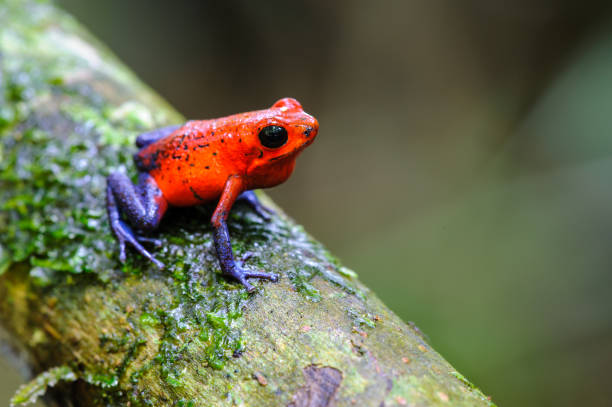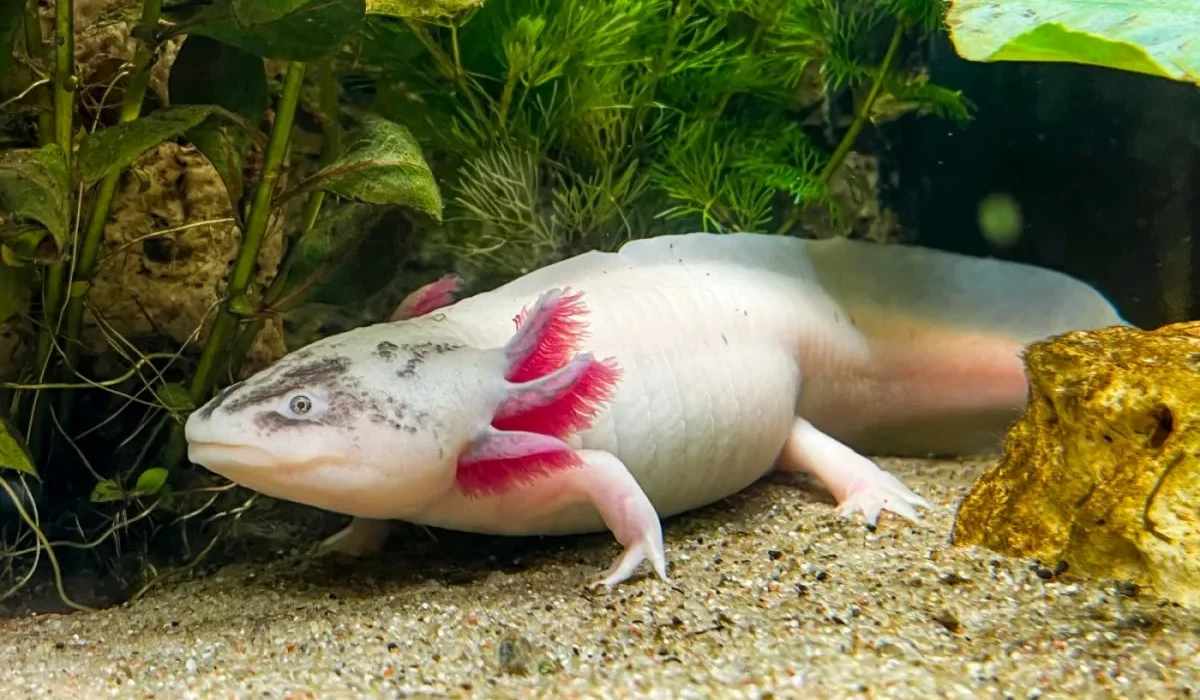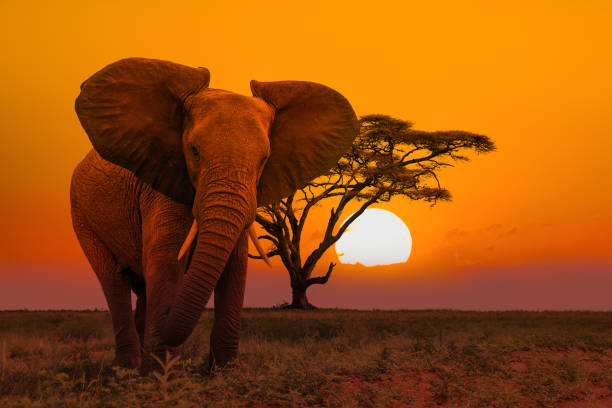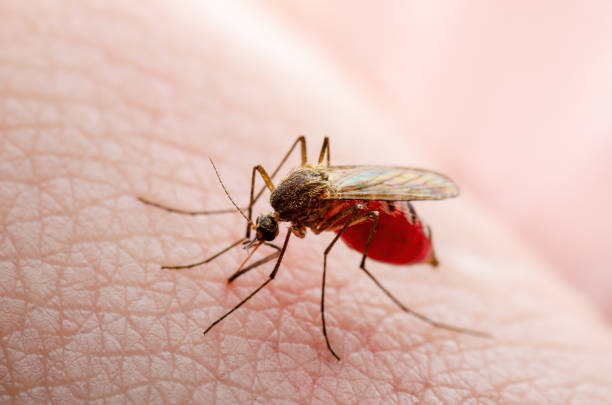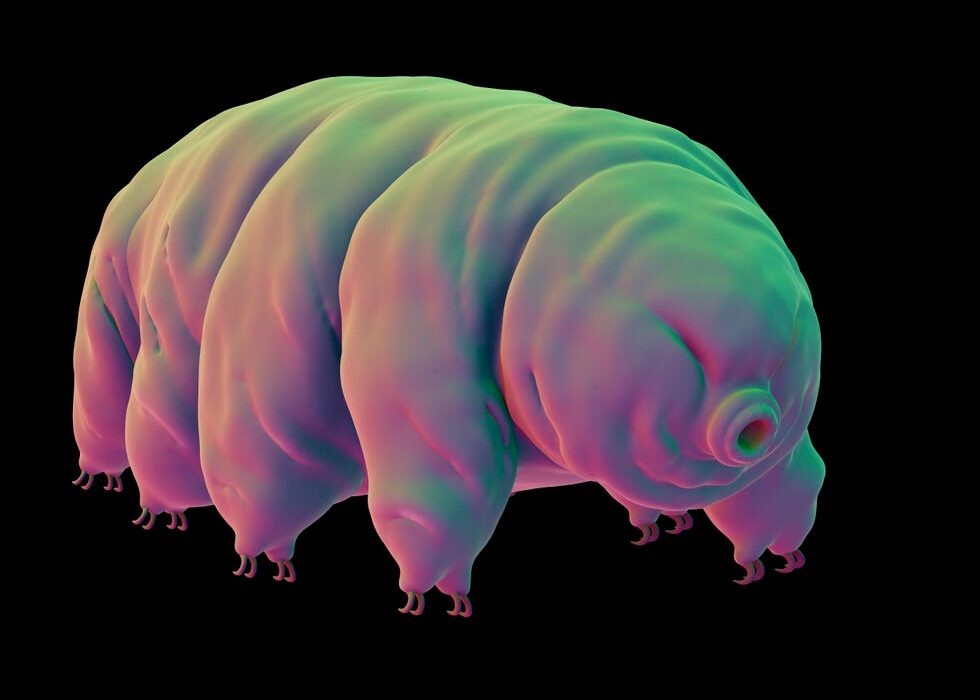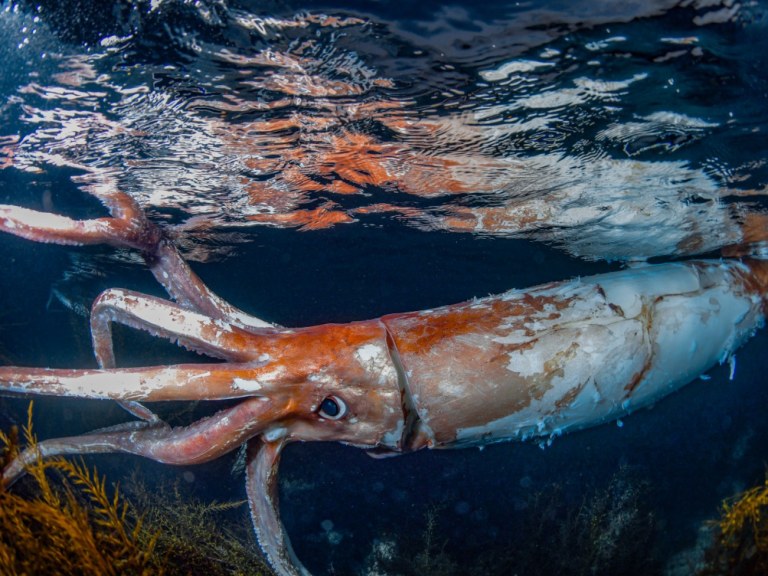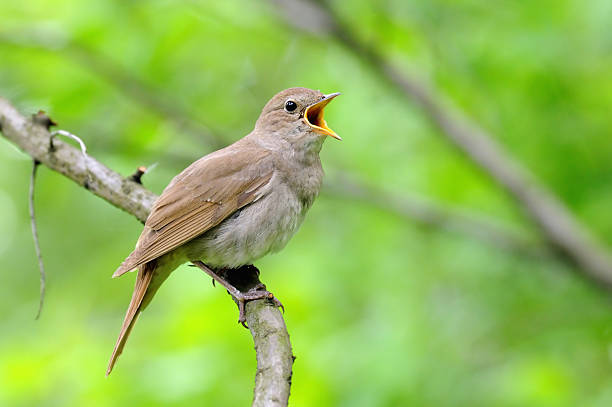Frogs have always carried an air of quiet mystery. Hidden among the damp leaves and mossy banks, they croak their songs into the night, blending into the chorus of the forest. But among these amphibians are creatures so visually extraordinary that they seem like paintings come to life—beings covered in colors so vivid, patterns so mesmerizing, that they defy imagination.
Frogs are nature’s artists, adorned in palettes that rival sunsets, coral reefs, and wildflowers. Their skin is not only a display of beauty but also a survival tool—a complex canvas of camouflage, warning, and communication. From radiant blues and golden yellows to deep reds and hypnotic spots, each hue tells a story of evolution, danger, and adaptation.
Let’s journey into the luminous world of twelve frogs whose color patterns are so astonishing they seem almost unreal—yet every shade, every speckle, every glow serves a vital purpose in the grand theater of life.
1. Poison Dart Frog – The Jewel of the Rainforest
Deep within the dense rainforests of Central and South America lives a family of frogs so dazzling they seem forged from gemstones. Poison dart frogs (family Dendrobatidae) are among the most brilliantly colored animals on Earth—tiny bodies adorned with electric blues, neon greens, blazing oranges, and fiery reds.
Their beauty, however, hides a deadly secret. These frogs secrete potent toxins through their skin, powerful enough in some species to paralyze or even kill predators. Indigenous peoples once used these toxins to coat the tips of their blow darts, giving the frogs their famous name.
Each color pattern is a message: “Do not touch.” Evolution sculpted these vivid hues as aposematic signals—visual warnings that tell potential predators that danger lies within. Yet within their toxicity lies fascination. The blue poison dart frog (Dendrobates tinctorius “azureus”) glows with sapphire skin and black spots, like night sky constellations. The strawberry poison dart frog (Oophaga pumilio) flaunts a crimson body with blue limbs, resembling a creature sculpted from rubies and sapphires.
Their colors are more than beauty—they are chemistry, survival, and art in motion.
2. Red-Eyed Tree Frog – The Sleepless Dream
No frog embodies tropical enchantment like the red-eyed tree frog (Agalychnis callidryas). Found in the lush rainforests of Central America, this amphibian looks as if it leaped straight from a dream.
Its body is a masterpiece of contrast—emerald green skin accented with electric blue and yellow stripes along the flanks, and most striking of all, eyes that blaze crimson like molten suns. At rest, it folds its limbs and closes its eyes, blending perfectly with the leaves. But when startled, it flashes its brilliant colors—a sudden burst of brightness that startles predators long enough for escape.
The red eyes serve another purpose, known as “startle coloration.” In the dim jungle light, the frog’s sleeping pose hides all color. When disturbed, it opens those shocking eyes and unfurls its limbs, creating an optical illusion of chaos. By the time the predator hesitates, the frog is gone.
Beyond its defenses, the red-eyed tree frog is a symbol of the tropics—vibrant, alive, and perpetually awake in a world of green rain and golden light.
3. Amazon Milk Frog – The Porcelain Phantom
High in the Amazon canopy lives a frog that looks as though it were crafted from fine china. The Amazon milk frog (Trachycephalus resinifictrix), also known as the blue milk frog, displays pale blue-gray skin marked with rich brown patches that look almost painted on. Its surface glistens with a waxy secretion—a milky fluid it releases to protect its skin from drying out and to ward off predators.
This frog’s color pattern is both camouflage and display. In the dim light of the rainforest canopy, its marbled tones blend with the bark and lichen, rendering it nearly invisible. Yet when viewed up close, it’s breathtakingly beautiful—a mosaic of blues and browns that looks more like art than evolution.
Despite its ghostly elegance, the Amazon milk frog is robust and adaptable. Its colors deepen with age, becoming more pronounced over time, as if the frog is painting itself anew with every year of its life.
4. Blue Poison Dart Frog – The Sapphire Sentinel
Among all the jewel-toned dart frogs, the blue poison dart frog (Dendrobates tinctorius “azureus”) stands out like a gem dropped from the sky. Found in the Sipaliwini savannah of Suriname, this tiny creature gleams with an unearthly brilliance.
Its skin is a deep cobalt blue scattered with black spots across its back and limbs, like dark stars scattered on a sapphire sea. Each pattern is unique, as individual as a fingerprint. Despite its small size—barely two inches long—it radiates both beauty and danger.
This frog’s skin secretes powerful alkaloid toxins derived from its insect diet, warning all who approach that its radiance is untouchable. But in captivity, deprived of its natural prey, it becomes harmless—a living gemstone that symbolizes nature’s paradox of beauty and peril intertwined.
The blue poison dart frog is more than a marvel; it’s a living lesson that brilliance and danger often share the same skin.
5. Harlequin Poison Frog – The Painted Dancer
The harlequin poison frog (Oophaga histrionica) is a celebration of contrast and chaos. Found in Colombia’s rainforests, this small amphibian is a burst of red, orange, yellow, and black—patterns that seem almost random yet perfectly balanced.
Each individual looks different, as if nature herself couldn’t settle on one design. Some wear masks of fire, others coats of midnight streaked with light. The result is an explosion of color that seems to dance across their bodies like carnival confetti.
These frogs are territorial and fiercely protective of their offspring. The females carry their tadpoles one by one to small pools of water inside bromeliads, feeding them with unfertilized eggs. Even their parenting reflects artistry—a careful act of devotion painted in the colors of survival.
Their hues tell predators to beware, but to human eyes, they are poetry in motion—a living celebration of color and care.
6. Glass Frog – The Transparent Wonder
If most frogs hide their mysteries under patterned skin, the glass frog (Centrolenidae family) wears its secrets on full display. Found throughout Central and South America, these delicate amphibians have skin so translucent that their internal organs are visible.
Viewed from above, they are lime green with tiny yellow flecks—perfect camouflage among the leaves. But underneath, their bellies are nearly transparent, revealing their beating hearts, flowing blood, and coiled intestines.
This transparency isn’t just for show. Scientists believe it helps regulate heat and light absorption, allowing the frogs to remain unseen by predators both day and night.
The sight of a glass frog resting on a leaf in the moonlight is surreal—a ghostly being suspended between visibility and invisibility. In its fragility lies its strength, a paradox that captures the ethereal beauty of nature’s subtler art.
7. Tomato Frog – The Fiery Guardian of Madagascar
From the humid forests of Madagascar comes the tomato frog (Dyscophus antongilii), a plump, round creature that looks like it was dipped in molten lava. Its skin glows with intense shades of orange and red, fading into golden hues across its body.
When threatened, it inflates itself into a balloon of color, appearing larger and more intimidating. If that fails, it secretes a sticky white toxin that irritates predators’ eyes and mouths.
The tomato frog’s fiery appearance is more than warning—it’s a statement of resilience. Beneath its vivid armor lies a calm, almost placid creature that spends much of its life buried in mud or leaf litter. Yet when it emerges, it does so in a blaze of red brilliance—a flame in the darkness, a guardian of Madagascar’s fragile ecosystems.
8. Golden Poison Frog – The Lethal Beauty
In the humid forests of Colombia lives the most dangerous frog on Earth: the golden poison frog (Phyllobates terribilis). Its skin shines with an almost metallic sheen, ranging from lemon yellow to deep golden orange.
Behind that glow lies one of the deadliest natural toxins known—batrachotoxin. Just two micrograms can be fatal to a human. Indigenous tribes once used this frog’s secretions to poison hunting darts, a practice that gave the species its chilling fame.
Yet despite its lethality, the golden poison frog is calm and graceful. Its beauty is radiant but untouchable, like a sun that burns too brightly to approach. In captivity, fed on a non-toxic diet, it loses its deadly potency—a reminder that even danger is shaped by environment.
This frog’s shimmering skin is evolution’s paradox: lethal defense wrapped in pure gold.
9. Vietnamese Mossy Frog – The Master of Disguise
In the misty limestone caves of northern Vietnam dwells a frog that could vanish before your eyes. The Vietnamese mossy frog (Theloderma corticale) is an evolutionary illusionist, covered in a patchwork of greens, browns, and blacks that perfectly mimic the texture of moss and lichen.
Its warty skin is irregular, spiky, and rough, blurring the line between animal and environment. When still, it is indistinguishable from the surrounding rocks—a camouflage so perfect that even predators’ sharp eyes are fooled.
But beneath the disguise lies a subtle beauty. When wet, the frog’s colors deepen, and its eyes—bright emerald with black horizontal pupils—reveal the life within the illusion.
The mossy frog teaches us that color is not only for show. Sometimes, beauty is found in the art of invisibility, in the harmony between creature and landscape.
10. Surinam Horned Frog – The Earth’s Warrior
Bulky, fierce, and strikingly patterned, the Surinam horned frog (Ceratophrys cornuta) looks like a creature sculpted from the forest floor. Its body is broad and flat, colored with earth tones—browns, greens, and yellows—that resemble fallen leaves.
Its namesake “horns” are small projections above its eyes, giving it a dragon-like visage. This frog’s color patterns are camouflage perfected, allowing it to lie in wait, motionless, until prey passes by. Then, in a lightning-fast strike, it devours insects, small reptiles, and even other frogs.
The Surinam horned frog is both predator and artwork. Its earthy palette, mottled and bold, makes it nearly invisible among decaying leaves—a reminder that even the soil can spawn beauty, fierce and primal.
11. Tiger-Legged Monkey Frog – The Jungle Acrobat
From the rainforests of South America comes a frog that looks like a carnival dancer in mid-performance. The tiger-legged monkey frog (Phyllomedusa tomopterna) is a slender, tree-dwelling amphibian adorned with bands of bright orange and black across its limbs, contrasted against a lime-green body.
When it leaps through the trees, those stripes flash like tiger markings—warning signals that confuse predators. Its large eyes, pale gold with horizontal pupils, add an almost ethereal quality to its face.
This frog’s striking colors are more than decoration. They serve both as camouflage and communication, flashing in movement and fading in stillness. Its skin also secretes bioactive compounds that scientists study for medical potential, including painkillers and antibiotics.
The tiger-legged monkey frog is living proof that elegance and utility can coexist—an aerial dancer whose color and grace tell a story of survival in motion.
12. Clown Tree Frog – The Jungle’s Laughing Light
Few creatures are as delightful as the clown tree frog (Dendropsophus leucophyllatus), native to the Amazon Basin. With its striking white patches outlined by deep brown or black and its occasional orange or yellow highlights, this small amphibian looks like a miniature harlequin.
Its patterning helps it blend among the mottled shadows of leaves, but when caught in the beam of moonlight, it glows softly like porcelain. Its name reflects not foolishness, but joy—its colors exude life, whimsy, and the playful spirit of the rainforest.
At night, its call rings like laughter across the jungle canopy, echoing between rivers and trees. The clown tree frog may be tiny, but its presence fills the forest with lighthearted charm. It reminds us that color isn’t always about warning or concealment—sometimes, it’s about celebration.
The Science and Purpose of Frog Colors
Behind every radiant hue and intricate pattern lies biological brilliance. Frog coloration arises from three main types of skin cells, or chromatophores:
- Melanophores, which produce blacks and browns.
- Xanthophores, responsible for yellows and reds.
- Iridophores, which reflect light, creating blues and iridescence.
These layers interact to form the dazzling spectrum we see in nature. Beyond beauty, color serves essential purposes: camouflage, mate attraction, thermoregulation, and predator deterrence.
Bright colors, especially in tropical species, often warn of toxins—a strategy known as aposematism. Others use cryptic coloration to vanish entirely into their surroundings. Still others shift their hues depending on mood, light, or temperature.
Frog skin, living and breathing, becomes a biological canvas that constantly adapts—a living expression of survival.
The Artistry of Evolution
Color in frogs is not random—it’s the poetry of adaptation written across generations. Through millions of years, evolution has painted these creatures to suit their worlds: bright where danger needs to speak, dull where silence is survival, and iridescent where mystery reigns.
Scientists continue to study these patterns not only for their ecological importance but for the inspiration they bring. Artists, biologists, and chemists alike look to frogs for insights into camouflage, biomimicry, and the chemistry of pigments.
Each hue and pattern is a coded message—a whisper of life honed by time and environment.
A World Painted in Life
To see a frog of brilliant color is to witness nature’s finest act of artistry. Each one, from the golden poison frog’s fatal gleam to the glass frog’s ghostly transparency, embodies the tension between fragility and power.
They remind us that the world is not painted in dull tones of survival alone—it thrives in color, vibrancy, and emotion. Frogs are the living brushstrokes of the Earth’s imagination, their bodies shimmering with the language of rain, leaf, and sun.
In their patterns, we see life’s creative genius: beauty born from danger, color born from need, and wonder born from evolution’s endless canvas.
And perhaps that’s the greatest secret of all—that the world’s most incredible colors are not painted on wings or petals, but on the soft, breathing skin of frogs that leap between rain and eternity.
